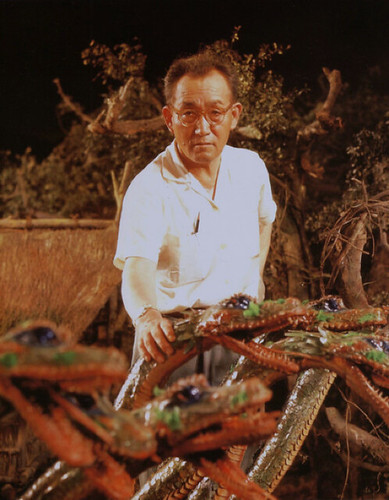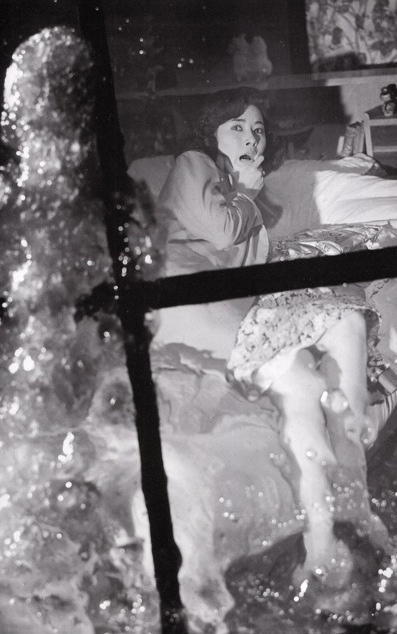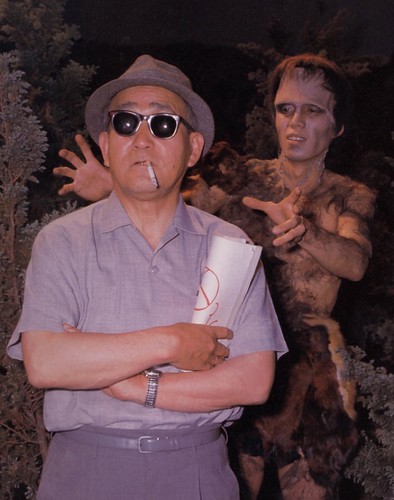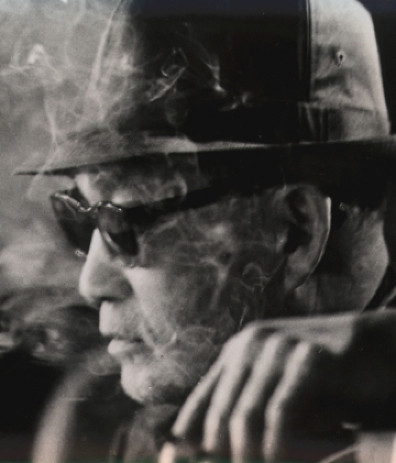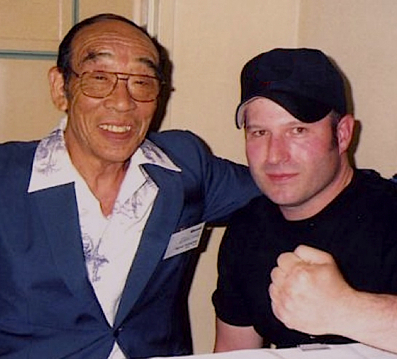
"I'm not as afraid of Godzilla as I am the Editor; he's meaner."
This week I will be heading to Chicago as a guest of the only kaiju eiga (Japanese monster movie) convention in North America, G-Fest XV, taking place July 4th-7th, at the Crown Plaza O’Hare. I’ve only attended two of the previous events held in Southern California (for which I put together video programming and co-hosted several presentations), mostly because the event is ostensibly held in Chicago — and how does one choose between Chicago and Tokyo? Other times, I’ve been so caught up with things at home, I space on attending G-Fest (I do the same thing with Comic Con, too). But, things are different this year.
First off, my book on the father of Japanese Visual Effects was released this past November, and as the author, I am compelled to make the rounds to press flesh and forge my name on tomes — otherwise known as book signings. Secondly, the organizers of G-Fest XV have invited Haruo Nakajima, the actor-cum-stuntman who played a plethora of monsters for Eiji Tsuburaya and was the primary man in the Godzilla suit from the original GODZILLA (1954) through GODZILLA VS. GIGAN (1972). With Nakajima there, whom I haven’t seen in eight years, how could I not go?
And so, writer Brett Hommenick and I will have the great honor of conducting the on-stage interview with Mr. Nakajima at G-Fest XV on Saturday from 10:00 am-12:00 pm. We will cover his career from Godzilla to Ultraman, and ask for the behind-the-scenes stories on making these classics, including his near death experiences on the set. Mr. Nakajima will be attending the event all weekend, and this is going to be a special, once-in-a-lifetime opportunity for fans, who haven’t already had the pleasure, to meet with the man they call Godzilla.
Other guests attending G-Fest XV include UFC fighter-cum-actor Don Frye who appeared as “Captain Gordon Douglas” in Ryuhei Kitamura’s awful GODZILLA FINAL WARS (2004). Who knew that the German filmmaker Jörg Buttgereit, who made the notorious NEKROMANTIK (1987), was a Godzilla fan? Jörg, who has put together extras for Deutsch DVD releases of kaiju eiga (including interviews with folks such as Mr. Nakajima), will be at G-Fest XV to shoot footage and interviews for his new documentary, Monsterland! Returning to G-Fest XV will be noted writer Donald F. Glut and actor Robert Scott Field.
At G-Fest XV I will also be hosting two special presentations: The Genesis of Ultraman (Friday from 2:00pm-3:00pm) which will explore the origins of the classic 1966 series produced by Eiji Tsuburaya, how it was produced, and the cultural impact the series continues to have today, around the world, through continued rebroadcasts and spinoffs. On Saturday from 1:00 pm to 3:00 pm, I have selected over 150 behind-the-scenes photos for Eiji Tsuburaya: Master of Monsters, which will take us through all the major fantasy films from GODZILLA to LATITUDE ZERO. If you are attending G-Fest XV, you won’t want to miss this show.
Over the weekend, I will also be participating on these philosophical panels about Japanese Monster Movies, which should prove to be a lot of fun: What is a Kaiju? on Friday from 3:00-4:00 pm, will try to search for what makes Japanese monsters Japanese, and DESTROY ALL MONSTERS 40th Anniversary on Sunday from 2:30-3:00 pm, celebrating one of the most beloved Godzilla films of the 1960s. Of course, there are other great presentations and events at G-Fest XV (and bad-ass lowbrow artist David Durrett will be there, too), but they don’t want me to spoil the fun for you!
Dammit, Jet Jaguar! I almost forgot about the book signing! Over the weekend, I will be scribbling rude comments into copies of my book, EIJI TSUBURAYA: MASTER OF MONSTERS at the Clawmark Toys booth in the Dealer’s Room. I will be signing from 6:00 pm-8:00 pm on Friday, 3:30 pm-5:30 pm on Saturday, and 10:00 am-12:00 pm on Sunday (all times approximate and subject to change, unless you buy me dinner). I hope to see you there!
For more information about G-Fest XV, please go to their official website at G-Fan.com.
